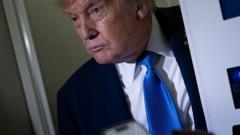By Marie-Chantal Uwanyiligira, Nathalie Picarelli, Markus Kitzmuller, Diego Rivetti and Hans Anand Beck
Can a country turn debt into opportunity? With the right approach, it can
If managed effectively, debt can be transformed into a powerful tool for development. Côte d’Ivoire’s recent experience with a Debt-for-Development Swap offers valuable lessons for other countries considering similar strategies.
How did the debt swap work?
A Policy-Based Guarantee (PBG) from the World Bank enabled Côte d’Ivoire to secure a new commercial loan at a significantly lower interest rate. The proceeds were used to buy back up to EUR 400 million of expensive older loans falling due in the coming years. This swap freed up EUR 330 million in the next five years, with savings of EUR 60 million in present value terms.
The government of Côte d’Ivoire has committed to channel most of these savings towards constructing additional 30 lower-secondary schools, benefiting approximately 30,000 students, half of whom are girls. Progress will be monitored through an ongoing World Bank Program for Results (PforR) Operation.
From theory to impact
This was the first real-world application of the World Bank/IMF Debt for Development Swap framework launched last year. The framework proposes a more transparent, effective and country-led approach to debt swaps that can help improve the cost/risk profile of the debt portfolio while supporting high-impact development projects.
Four key factors made the difference:
- Commitment to macroeconomic stability: Côte d’Ivoire made significant progress towards fiscal discipline. After the fiscal deficit reached 6.8% of GDP in 2022, the government committed to reducing it to the West African Economic and Monetary Union target of 3% by 2025, with support from an IMF program. Progress has been steady:
- The fiscal deficit is estimated at 4 percent of GDP in 2024, driven by improved revenue collection and lower expenditure.
- Better tax policy and administration measures boosted revenue collection, increasing it by 1.6 percentage points to 16.3 percent of GDP.
- Moderate debt risk and strong debt management: Côte d’Ivoire was not facing solvency issues but had medium-term liquidity pressures. The government concluded a large debt buy back in early 2024, using US$1.9 billion from a new Eurobond sale to partially pay off older Eurobonds debts and partially repay 16 commercial loans. The PBG-backed debt swap further strengthened debt sustainability by lowering debt payments in 2025 by up to 1 percent of revenue, freeing up much-needed fiscal space.
- Strong commitment to development:The government decided to invest the savings in education, a key priority for the country. With a Human Capital Index of 0.38, the country ranks among the lowest globally, and a 2.4 percent annual increase in students is putting growing pressure on the education system.
The government leveraged the debt service savings by raising the target of an active World Bank PforR, aiming to build at least 45 schools by 2030.
- Strong dialogue and trusted relationship: The World Bank’s extensive portfolio in Côte d’Ivoire, amounting to more than US$6 billion across all sectors, facilitated open dialogue and the use of the institution’s convening power and financial instruments.
What’s next?
As other countries explore debt-for-development swaps, success will depend on the right conditions and continuous learning. Côte d’Ivoire’s experience demonstrates that when done right, these swaps can free up money and fund real development progress.
Learn more about how this debt swap is helping to fund education: worldbank.org/fund-education
The post Want a debt swap to work? What Côte d’Ivoire got right appeared first on Caribbean News Global.
